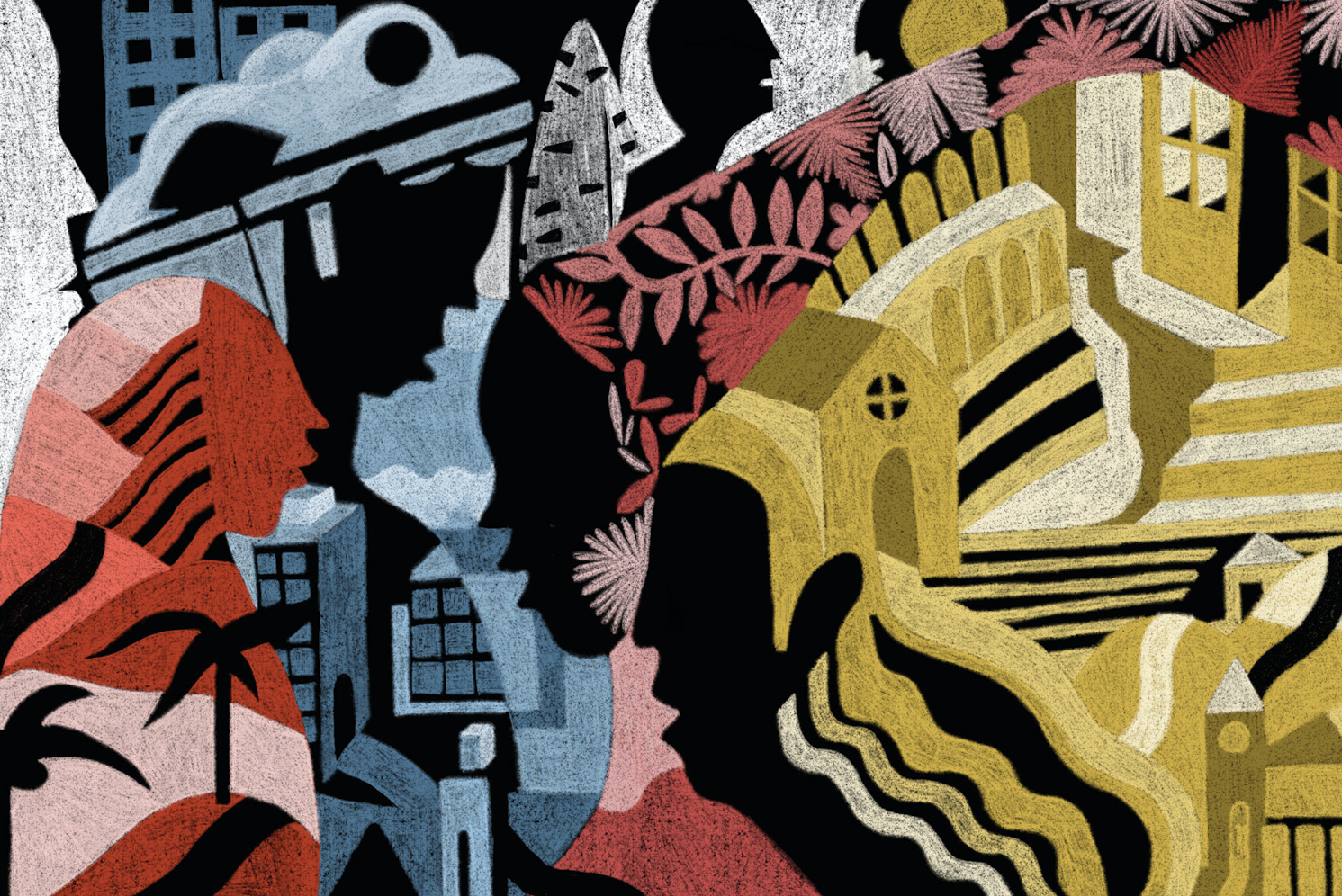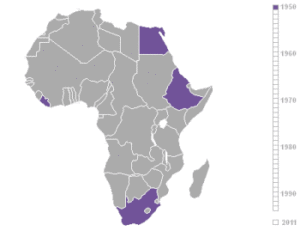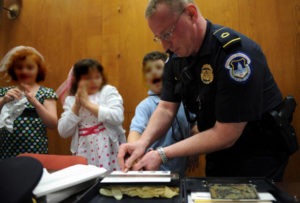Today’s Black travel leaders inspire and build community. But much needs to change before travel is truly equal.
Today’s Black travel leaders inspire and build community. But much needs to change before travel is truly equal.
I grew up knowing that Black folks travel. The dining room table at Akwaaba, my parents’ Brooklyn-based inn, hosted a steady rotation of Black travelers from around the U.S. and the world. Over warm biscuits and creamy grits, they talked about the museum exhibit they planned to see and the Broadway show that left them breathless.
While they loved those New York City staples, they always said the real highlight of their trip was the fellowship they shared at the inn. Staying in a Black home with like-minded guests made them feel safe, seen, and celebrated.
This equal access and freedom to travel was the aspirational goal of mail courier Victor Hugo Green, from Harlem, New York, when he founded The Negro Motorist Green Book. __Known as “the bible” of Black travel, the guidebook was published from 1936 to 1967, listing the guest houses, restaurants, beauty parlors, night clubs, gas stations, and other places that were safe for Black travelers. Later in its evolution, the Green Book became the go-to resource for a newly emerging class of Black leisure travelers who wanted “a vacation without aggravation.”
Green knew that their journeys were fraught with challenges—not only the indignity of being denied service at white-only establishments but, in the worst cases, the possibility of being jailed, assaulted, or even killed in “sundown towns,” which decreed non-whites leave town limits before nightfall. Fans of HBO’s horror-drama series Lovecraft Country saw this depicted in a tense scene in the premiere episode. The leading characters barrel through a field, trying to outrun sunset, knowing that what awaits them if they fail could be fatal.
Nowadays, a diversity of sources, from boutique tour companies to family bloggers, provides the type of information the Green Book once did—and more. They not only support Black businesses but also build community within an African-American market that collectively spends, based on pre-pandemic research, $63 billion a year on travel.
But in an exhausting year of political crises and social change—which included both the killing of George Floyd and the mainstreaming of the Black Lives Matter movement, a polarizing election and the removal of Confederate monuments—the ideals to which Green aspired seem as elusive as ever. We asked Black travel leaders about the legacy of the historic guidebook and what Black travelers need now.
NEXT-GENERATION GREEN BOOK
“One of the biggest compliments Nomadness Travel Tribe has ever gotten is that we are the New Age, internationally based, digital Green Book,” says Evita Robinson. “We are a safe space, and that’s what the Green Book was.”
Contemporary resources for Black travelers go beyond listing a friendly place for a meal; they find like-minded tribes and create networks. Robinson founded Nomadness in 2011 as a Facebook group of millennial travelers of color, mostly women. The community now hosts an annual summit for Black travelers, which drew more than 500 attendees at their virtual installment, Audacity Digi, in October.
Robinson knows it’s not just about finding a travel-compatible crew but also uplifting others in the community. In her journeys, Robinson seeks out Black businesses that her organization can support, including some storied establishments that first appeared in the Green Book’s pages, such as Clifton’s Cafeteria in Los Angeles and Green Acres Cafe in Birmingham.
Martinique Lewis, author of ABC Travel Green Book, wants travelers to know that Black history can be found everywhere, often in unexpected places. “I went to Amsterdam in June 2018, and, as ignorant as it sounds, I had no idea that Amsterdam had all of this rich Black history,” Lewis says. “I took Jennifer Tosch’s Black Amsterdam tour, and I was both blown away and upset at what I saw. In the Red Light District, for example, a place where every traveler to Amsterdam goes, all you have to do is look up, and you’ll see Black faces carved into statues from the 1600s. I was thinking, ‘why isn’t this the tour that’s being promoted?’”
Highlighting lesser known tours, businesses, and events, Lewis’s guidebook honors and illuminates the African diaspora globally and celebrates Black communities from Ecuador to South Korea.
“It’s such a great feeling when I go to a place where I didn’t expect to see Black people,” Lewis says. “When I do, I just want to cling to them; I want to know their stories.”
Zim Flores, founder of the boutique travel and media company Travel Noire helps people create their own adventurous travel stories. When Travel Noire first emerged on Instagram in 2013, Black folks flocked to the page to witness themselves taking up space around the world. It was, and still is, a vision board. With more than 600,000 followers on Instagram, Travel Noire now offers itineraries for destinations across the globe, from Morocco to Malta.
“Black people travel for so many different reasons. Some of us want to visit Black historical landmarks, some of us want to go someplace totally foreign from us and what we know,” Flores says.
She wants to encourage Black travelers to voyage fearlessly. “I’m in the business of shaking up mindsets, but it would be naive of me to tell people, ‘Just go! Don’t worry.’ I’ve always thought to myself, there are multiple experiences that someone can have at any given time, in any given country. Let me go and find out for myself,” Flores says. “I think that was what worked so well for Travel Noire. I was a bold and courageous traveler, and I was willing to go anywhere. And because I went, it allowed other Black travelers to see that they could do it, too.”
Parker McMullen Bushman and Crystal Egli founded Yelp-like website Inclusive Journeys to broaden the Green Book’s audience. “We thought, ‘What if there was a crowdsourced database of safe spaces like the original Green Book, but with a twist?’” says Bushman. “We want to include all different types of marginalized identities and create a listing of businesses with physical amenities that speak to their needs. For example, does a restaurant have gender-neutral bathrooms for trans guests? Is it wheelchair accessible?”
Another goal of Inclusive Journeys was to gather the data and resources to make an economic case for inclusivity. Companies “don’t want to make a change because it’s the right thing to do; they want a financial incentive,” says Bushman. “Economics and data are the two things that can really change policy and practices at a higher level,” says Egli.
But its website is not just about the data. “We also want to be more subjective with our inclusivity rating,” says Bushman. “We want to ask people: Did you feel safe in this space? Did you feel welcomed? Did you feel celebrated, not just tolerated? As a Black woman, I never know how someone’s conscious or unconscious biases will manifest when they serve me. If other people can vouch for an establishment, suddenly you can live life without that worry on your shoulders.”
DO WE NEED A NEW GREEN BOOK?
In the 1948 annual edition of his book, editor Green wrote, “There will be a day sometime in the near future when this guide will not have to be published. That is when we as a race will have equal opportunities and privileges in the United States.”
Part of the Green Book’s triumph—and eventual obsolescence—lies in the fact that laws did change: Black people can now legally go anywhere. When Candacy Taylor first started research on her book Overground Railroad: The Green Book and the Roots of Black Travel in America, people would tell her they were shocked the Green Book ever existed. “They said, ‘Thank God we don’t need that anymore!’” says Taylor.
“Then Trump got elected in 2016, and so much started happening politically that people began saying, ‘We need a new Green Book! We need a new Green Book!’” Taylor continues. “But I believe what they’re really longing for is a sense of freedom and empowerment through travel.” That freedom continues to be threatened.
“While the __Green Book provided an index of places Blacks could receive service, that didn’t mean you’d get there alive—there were still sundown towns and racist cops—and that was the bigger issue,” says Taylor.
On the heels of a historic election—one that continued to highlight the national divide the country didn’t mend after the Civil War, nor when Jim Crow ended—Taylor says there is much work to be done before Black travelers are relieved of the creeping discomfort that occurs when traveling to a new or potentially unwelcoming place.
“A new Green Book isn’t going to solve that problem,” says Taylor. “Those who say we need a new Green Book are seeking a freedom that won’t truly be felt until we get to the root of systematic racism in this country.”
Taylor’s sentiments are a precautionary reminder to those who optimistically hold on to a belief that so much has changed. Still, Black travelers—Robinson, Lewis, Flores, Bushman, Egli, and the like—continue to answer the call of the road. We journey on, just as the Black travelers before us did, who held the Green Book close in search of safety and new horizons. We can’t say no. For all of us, travel is freedom.
Brooklyn-based Glynn Pogue is currently at work on a collection of essays on race, class, identity, and traveling while Black, topics she regularly sounds off about on her podcast, #BlackGirlsTexting. Follow her on Instagram.




